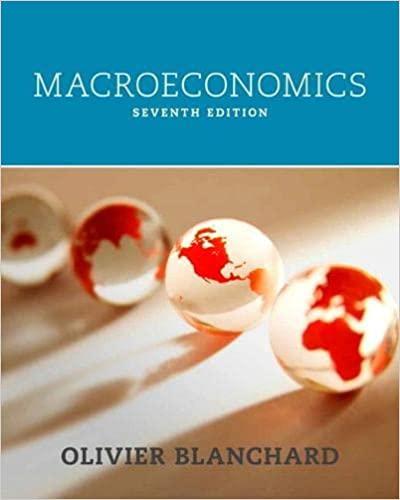Answered step by step
Verified Expert Solution
Question
1 Approved Answer
1. Consider the following IS-LM model: C 200.25YD I = 150+.25Y - 1000i G=200 T = 100 (M/P) 2Y-6000i M/P = 1500 a. Derive

1. Consider the following IS-LM model: C 200.25YD I = 150+.25Y - 1000i G=200 T = 100 (M/P) 2Y-6000i M/P = 1500 a. Derive the IS relation. (Hint: You want an equation with Y on the left side and everything else on the right.) b. Derive the LM relation. (Hint: It will be convenient for later use to rewrite this equation with i on the left side and everything else on the right.) c. Solve for equilibrium real output. (Hint: Substitute the expression for the interest rate given by the LM equation into the IS equation and solve for output.) d. Solve for the equilibrium interest rate. (Hint: Substitute the value you obtained for Y in part (c) into either the IS or LM equations and solve for i. If your algebra is correct, you should get the same answer from both equations.) e. Solve for the equilibrium values of C and I, and verify the value you obtained for Y by adding C, I, and G. f. Now suppose that the money supply increases to M/P = 1,600. Solve for Y, i, c, and T, and describe in words the effects of an expansionary monetary policy. g. Set M/P equal to its initial value of 1,500. Now suppose that government spending increases to G = 400. Summarize the effects of an expansionary fiscal policy on Y, i, and C.
Step by Step Solution
There are 3 Steps involved in it
Step: 1

Get Instant Access to Expert-Tailored Solutions
See step-by-step solutions with expert insights and AI powered tools for academic success
Step: 2

Step: 3

Ace Your Homework with AI
Get the answers you need in no time with our AI-driven, step-by-step assistance
Get Started


